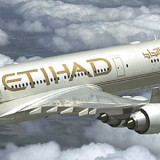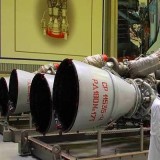DGA Enhances French Air and Space Force Capabilities with Two New H225M Caracal Helicopters

{loadposition bannertop}
{loadposition sidebarpub}
On December 20, 2024, the French Air and Space Force (AAE) marked a key milestone with the delivery of two H225M Caracal helicopters by the Directorate General of Armaments (DGA). These units are the first of eight ordered in April 2021 under the government’s aerospace support plan implemented during the Covid-19 pandemic. The official announcement of this delivery, made on January 16, 2025, reflects France’s ongoing efforts to modernize its military equipment.
Follow Army Recognition on Google News at this link
These upgrades enhance the versatility and efficiency of the Caracal, making it a key asset for AAE operations both domestically and in international theaters (Picture source: Airbus )
With these additions, the fleet of Caracal helicopters within French forces now totals 21 units, distributed between the AAE and the Light Aviation of the Army (ALAT). Previously operating 11 Caracal helicopters, including 10 within the 1/67 Pyrénées squadron of the Air Special Forces Brigade (BFSA), the AAE will directly benefit from these deliveries. These helicopters are set to replace aging Puma helicopters, particularly those stationed overseas, where operational needs remain significant.
The H225M Caracal, the latest in the Puma/Super Puma/Cougar helicopter family, was introduced in 2006 for missions such as combat search and rescue, tactical transport, and medical evacuation. With air-to-air refueling capabilities, it boasts exceptional range and endurance within its category. The newly delivered helicopters, however, include notable improvements over earlier versions. They are equipped with the latest-generation Euroflir 410M NG multi-spectral camera, a modernized cockpit with four 10×8-inch MFD displays, a CMA5024 GPS navigation system, as well as upgraded radios and electric hoists. Additionally, two extra directional lights, one white and one infrared, enhance nighttime operational capabilities.
These upgrades enhance the versatility and efficiency of the Caracal, making it a key asset for AAE operations both domestically and in international theaters. The helicopters will replace the Puma fleet stationed at strategic overseas bases such as those in French Guiana, Djibouti, and New Caledonia. This replacement has become urgent due to the declining availability of the Pumas, which face increasing maintenance costs and require 18 hours of servicing for each flight hour. Their availability rate was only 47% in 2020, underscoring the pressing need for modernization.
The technical specifications of the H225M Caracal highlight its ability to meet the demands of modern missions. Measuring 19.50 meters in length with a maximum takeoff weight of 11 tons and a top speed of 324 km/h, the helicopter can transport up to 28 soldiers or 10 stretchers accompanied by medical personnel. It can carry an external load of 4.7 tons and is equipped with safety systems including MAG 58 7.62 mm machine guns, a 20 mm SH20 cannon, missile warning sensors, countermeasure dispensers, and armor protection.
This modernization effort aligns with the objectives of the 2024-2030 Military Programming Law, which aims to establish a uniform fleet of 36 maneuver helicopters by 2035, with at least 32 units expected by 2030. In the short term, the two delivered Caracal helicopters will provide critical support to units operating in French Guiana, where Puma helicopters have been heavily utilized for missions such as combating illegal gold mining. A recent incident in December 2024 involving a damaged Puma highlights the need for these replacements.
This program also demonstrates its positive impact on the French aerospace industry. Airbus Helicopters is the main supplier, supported by Safran Helicopter Engines, Safran Electronics & Defense, and Thales. These companies contribute to maintaining France’s technological and industrial sovereignty while meeting the strategic requirements of its armed forces.
In conclusion, the delivery of these two H225M Caracal helicopters represents a significant step in modernizing the French Air and Space Force’s capabilities. These technologically advanced helicopters not only enhance operational efficiency but also support the broader industrial and strategic goals of France. With further deliveries expected, this initiative underscores the country’s commitment to maintaining a capable and adaptable defense system in the face of evolving challenges.

{loadposition bannertop}
{loadposition sidebarpub}
On December 20, 2024, the French Air and Space Force (AAE) marked a key milestone with the delivery of two H225M Caracal helicopters by the Directorate General of Armaments (DGA). These units are the first of eight ordered in April 2021 under the government’s aerospace support plan implemented during the Covid-19 pandemic. The official announcement of this delivery, made on January 16, 2025, reflects France’s ongoing efforts to modernize its military equipment.
These upgrades enhance the versatility and efficiency of the Caracal, making it a key asset for AAE operations both domestically and in international theaters (Picture source: Airbus )
With these additions, the fleet of Caracal helicopters within French forces now totals 21 units, distributed between the AAE and the Light Aviation of the Army (ALAT). Previously operating 11 Caracal helicopters, including 10 within the 1/67 Pyrénées squadron of the Air Special Forces Brigade (BFSA), the AAE will directly benefit from these deliveries. These helicopters are set to replace aging Puma helicopters, particularly those stationed overseas, where operational needs remain significant.
The H225M Caracal, the latest in the Puma/Super Puma/Cougar helicopter family, was introduced in 2006 for missions such as combat search and rescue, tactical transport, and medical evacuation. With air-to-air refueling capabilities, it boasts exceptional range and endurance within its category. The newly delivered helicopters, however, include notable improvements over earlier versions. They are equipped with the latest-generation Euroflir 410M NG multi-spectral camera, a modernized cockpit with four 10×8-inch MFD displays, a CMA5024 GPS navigation system, as well as upgraded radios and electric hoists. Additionally, two extra directional lights, one white and one infrared, enhance nighttime operational capabilities.
These upgrades enhance the versatility and efficiency of the Caracal, making it a key asset for AAE operations both domestically and in international theaters. The helicopters will replace the Puma fleet stationed at strategic overseas bases such as those in French Guiana, Djibouti, and New Caledonia. This replacement has become urgent due to the declining availability of the Pumas, which face increasing maintenance costs and require 18 hours of servicing for each flight hour. Their availability rate was only 47% in 2020, underscoring the pressing need for modernization.
The technical specifications of the H225M Caracal highlight its ability to meet the demands of modern missions. Measuring 19.50 meters in length with a maximum takeoff weight of 11 tons and a top speed of 324 km/h, the helicopter can transport up to 28 soldiers or 10 stretchers accompanied by medical personnel. It can carry an external load of 4.7 tons and is equipped with safety systems including MAG 58 7.62 mm machine guns, a 20 mm SH20 cannon, missile warning sensors, countermeasure dispensers, and armor protection.
This modernization effort aligns with the objectives of the 2024-2030 Military Programming Law, which aims to establish a uniform fleet of 36 maneuver helicopters by 2035, with at least 32 units expected by 2030. In the short term, the two delivered Caracal helicopters will provide critical support to units operating in French Guiana, where Puma helicopters have been heavily utilized for missions such as combating illegal gold mining. A recent incident in December 2024 involving a damaged Puma highlights the need for these replacements.
This program also demonstrates its positive impact on the French aerospace industry. Airbus Helicopters is the main supplier, supported by Safran Helicopter Engines, Safran Electronics & Defense, and Thales. These companies contribute to maintaining France’s technological and industrial sovereignty while meeting the strategic requirements of its armed forces.
In conclusion, the delivery of these two H225M Caracal helicopters represents a significant step in modernizing the French Air and Space Force’s capabilities. These technologically advanced helicopters not only enhance operational efficiency but also support the broader industrial and strategic goals of France. With further deliveries expected, this initiative underscores the country’s commitment to maintaining a capable and adaptable defense system in the face of evolving challenges.





